A glimpse into diversity at Snyk
Dipti Salopek
21. September 2020
0 Min. LesezeitIn light of the recent BLM protests and the pandemic disproportionately impacting minorities in the workforce, DEI (diversity, equity, inclusion) have been a lot on our mind recently.
However, even as we at Snyk set ourselves clear targets and actions for improvement, we recognized that the traditional measurements around gender and race, while absolutely critical, seemed insufficient in reflecting the true nuanced fabric of our global Snyk community and culture. After all, although we know we have strides to make in some areas, our 90% positive DEI score in our most recent engagement survey had to come from somewhere.
So, we set out on a mission to try and map out the unique fabric of our Snyk community along several other dimensions. Without negating any of the hard work on diversity that still lies in front of us as a society, here’s a broader look at what Snyk looks like overall.
It started with a voluntary, anonymous survey, which 43% of our Snykers completed, spread widely across all our departments and geographies.
First, we asked our Snykers how they would self-identify on the basis of several dimensions, and used this data to define our baseline of under-represented minorities (URM). Here are the results of those who identified as URM on specific dimensions:
Sexual orientation: 13%
Gender identity (including female): 31%
Race/ethnicity: 27%
Disability: 2%
What was as important to us as identifying the URM % in any one dimension was really to see the aggregation of our diversity in total, to get a feel for the overall richness of our community. So, we also calculated an aggregate diversity baseline of URMs across the board, and found, much to our delight, that a full 63% of respondents identified as URM in one category or other!
We then asked about religious beliefs, and here’s the overall distribution of our population, driven much by the geographies in which we currently operate: people who filled in “other” mostly leaned towards agnostic, which we’ll include as a choice for surveys in the future.
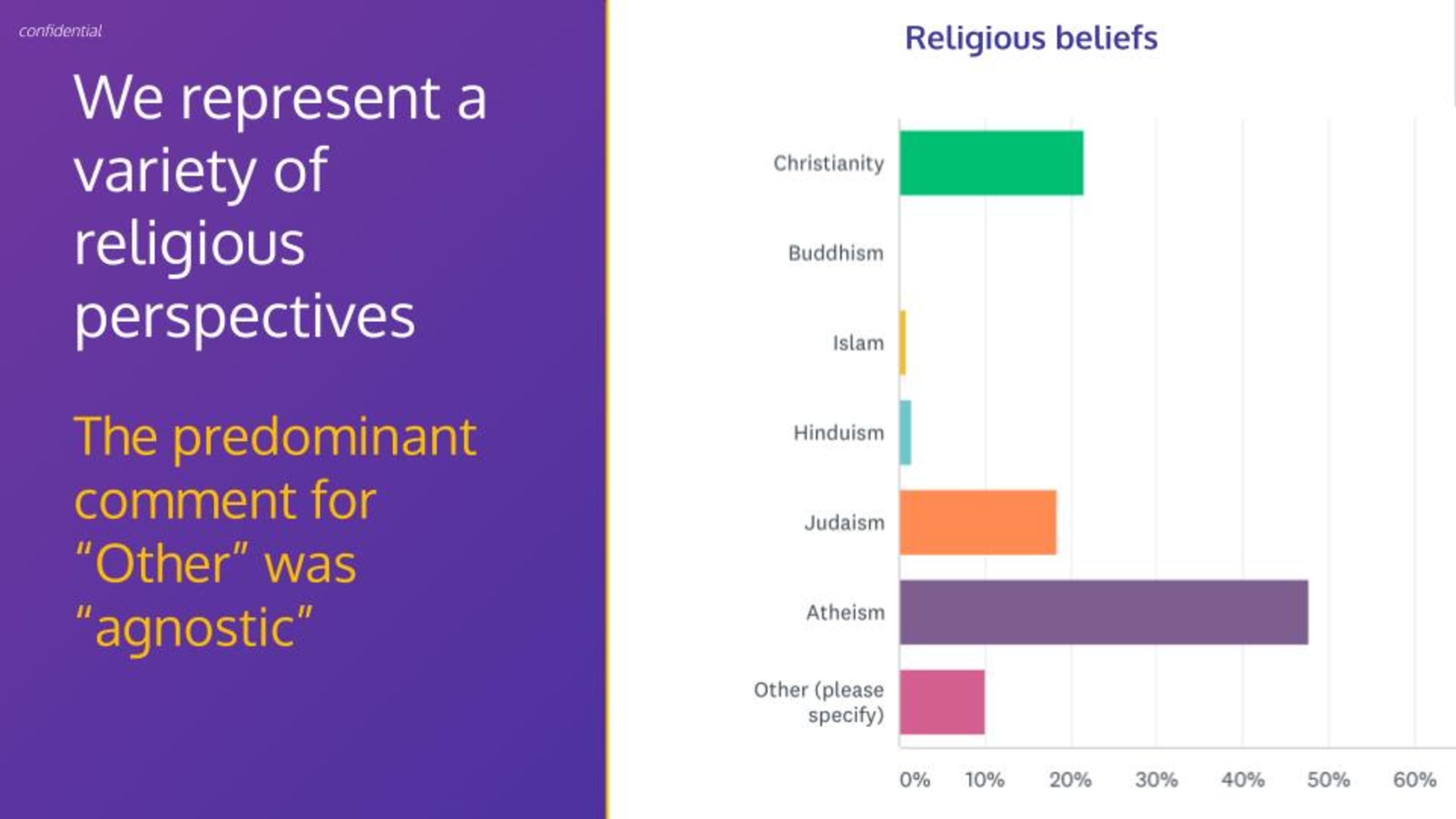
An important data point that affects wellness and productivity, especially in today’s world, is parental status. There, we found our respondents to be fairly evenly divided between being parents or not. Those who answered “other” typically had shared custody/responsibility for a child, and we will include this as an option in the future. Understanding this helps us identify how significantly our workforce is being impacted by the schooling crises of today. After much thought, we focused deliberately on parents, but in a future world where schooling isn’t as much a topical issue (!), we will expand this to look at caregiving responsibilities as a whole, including for the elderly, infirm, etc.
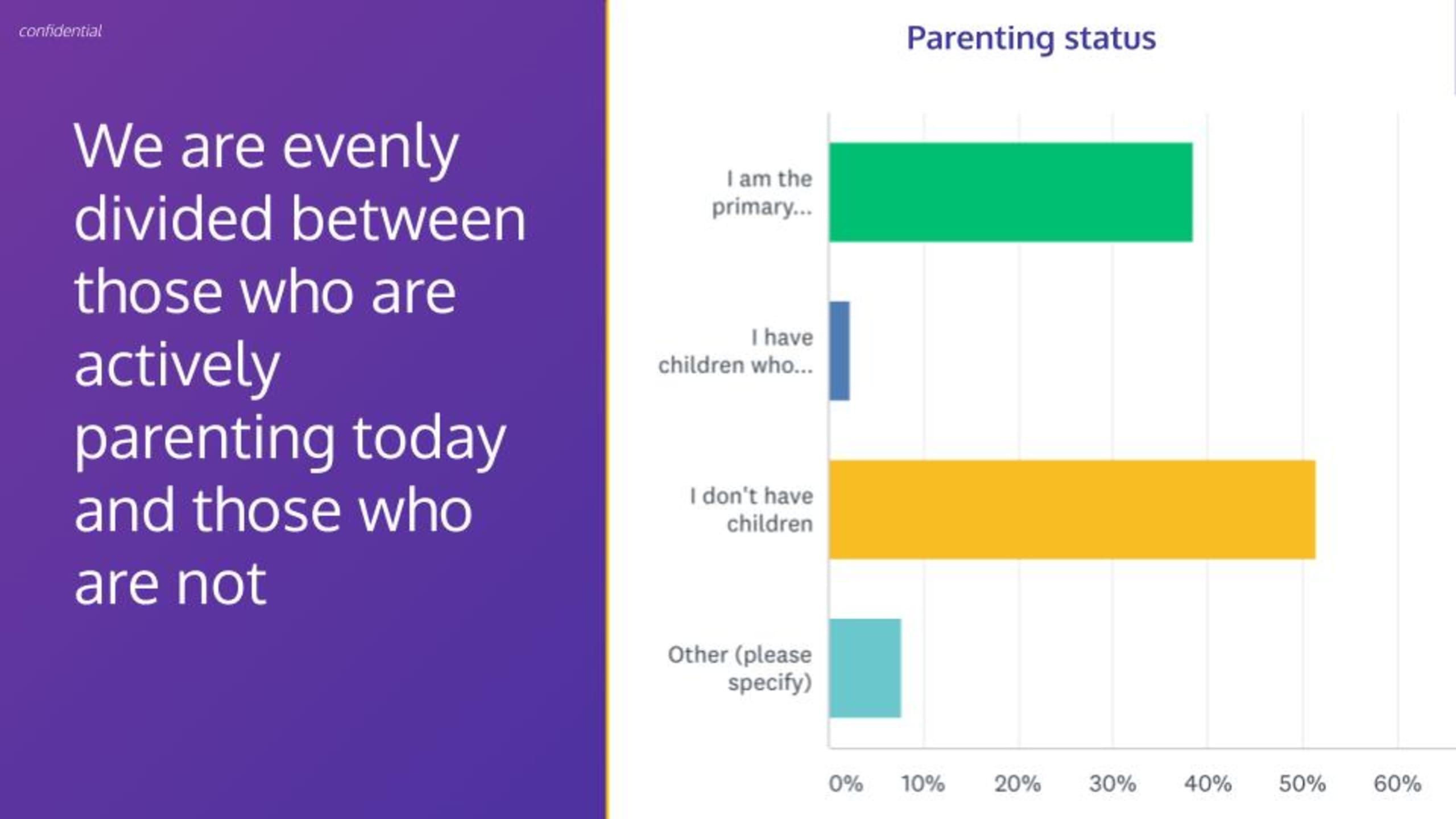
We were also curious about the spread in levels of educationacross our snyker employee base, and while the majority of our Snyker’s have university degrees as we had anticipated, we were delighted to see that several had joined us through non-traditional routes of education, suggesting a pathway towards social mobility and increasing the variety of perspectives across our community.
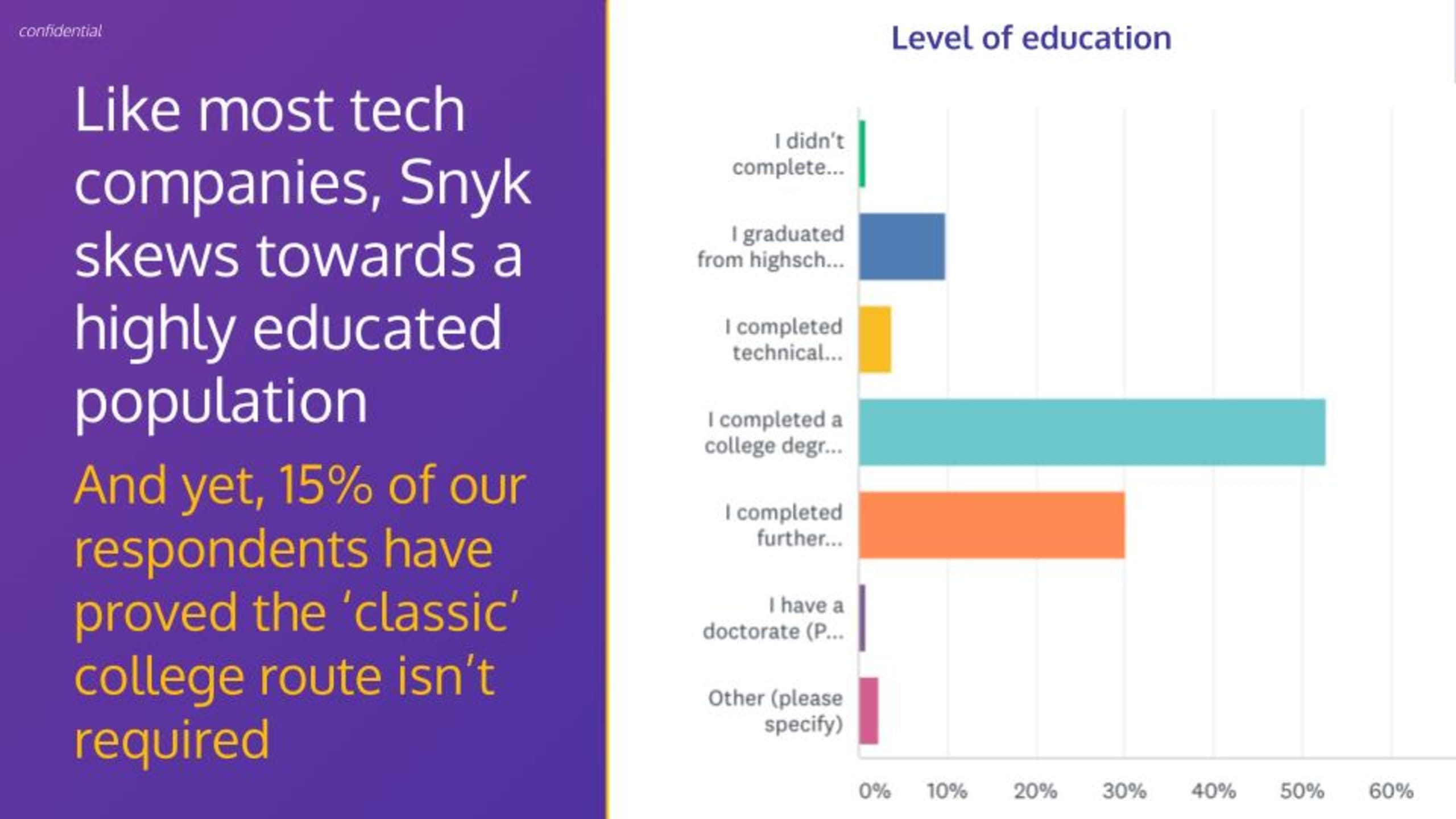
We also asked respondents about the socio-economic backgroundsin which they had grown up. Most predictably fell in the “middle class” bucket, which we will be further sub-dividing into more precise categories in future surveys. We loved that for the 15% of the respondents who joined from financially insecure backgrounds, we were able to create a path to success in Snyk, and hope to continue building upon this pathway for social mobility going forward.
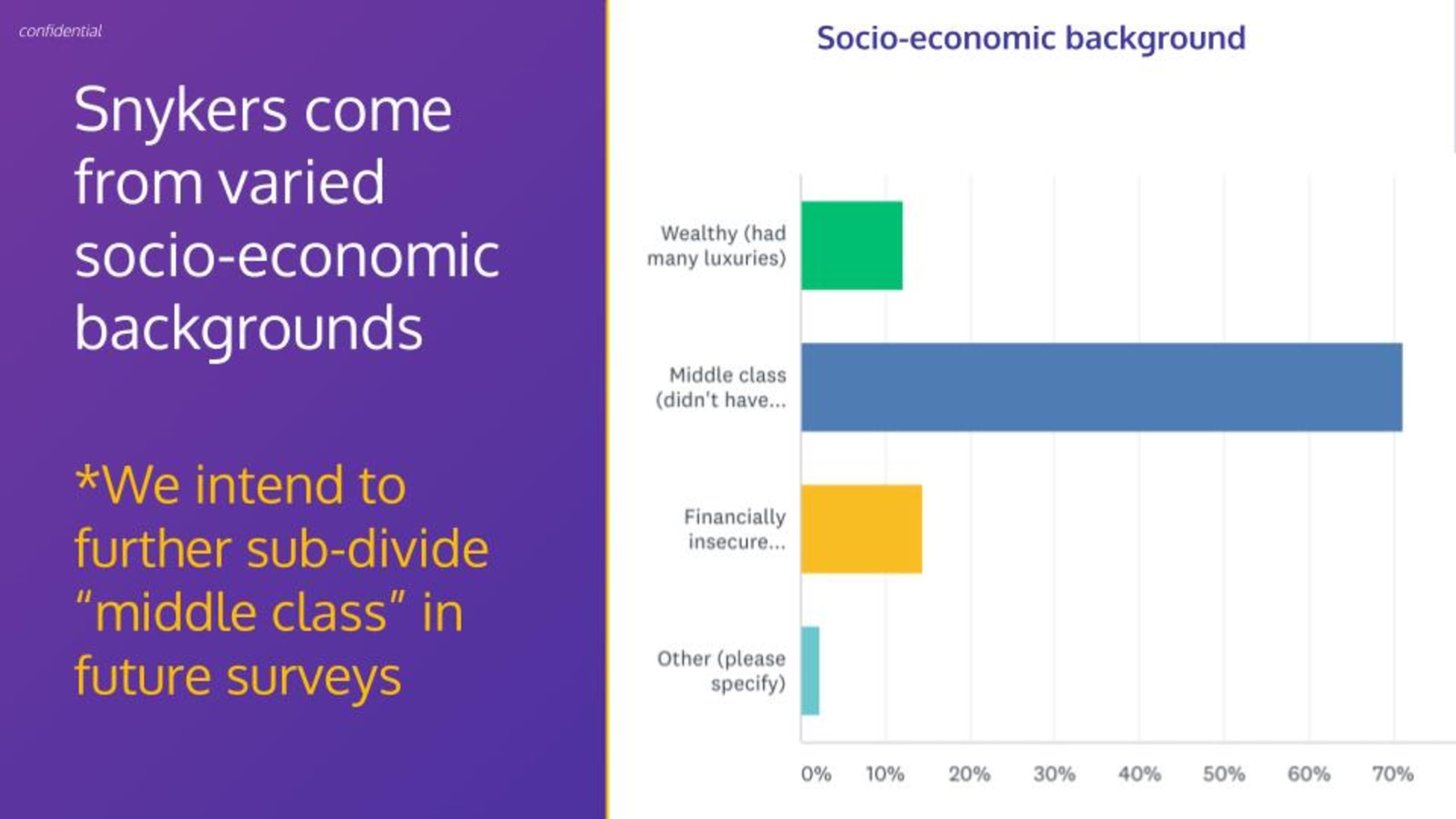
Additionally—and most importantly in today’s remote-first world—we asked Snykers about their intrinsic interaction preferences, and we were delighted with the distribution, showing an appreciation for all personality/communication styles across the board. The move to a remote-first way of working can be either helpful or harmful to how introverts can contribute to the dialog, depending on the practices a company develops—and we are spending time educating our teams in this area very deliberately.
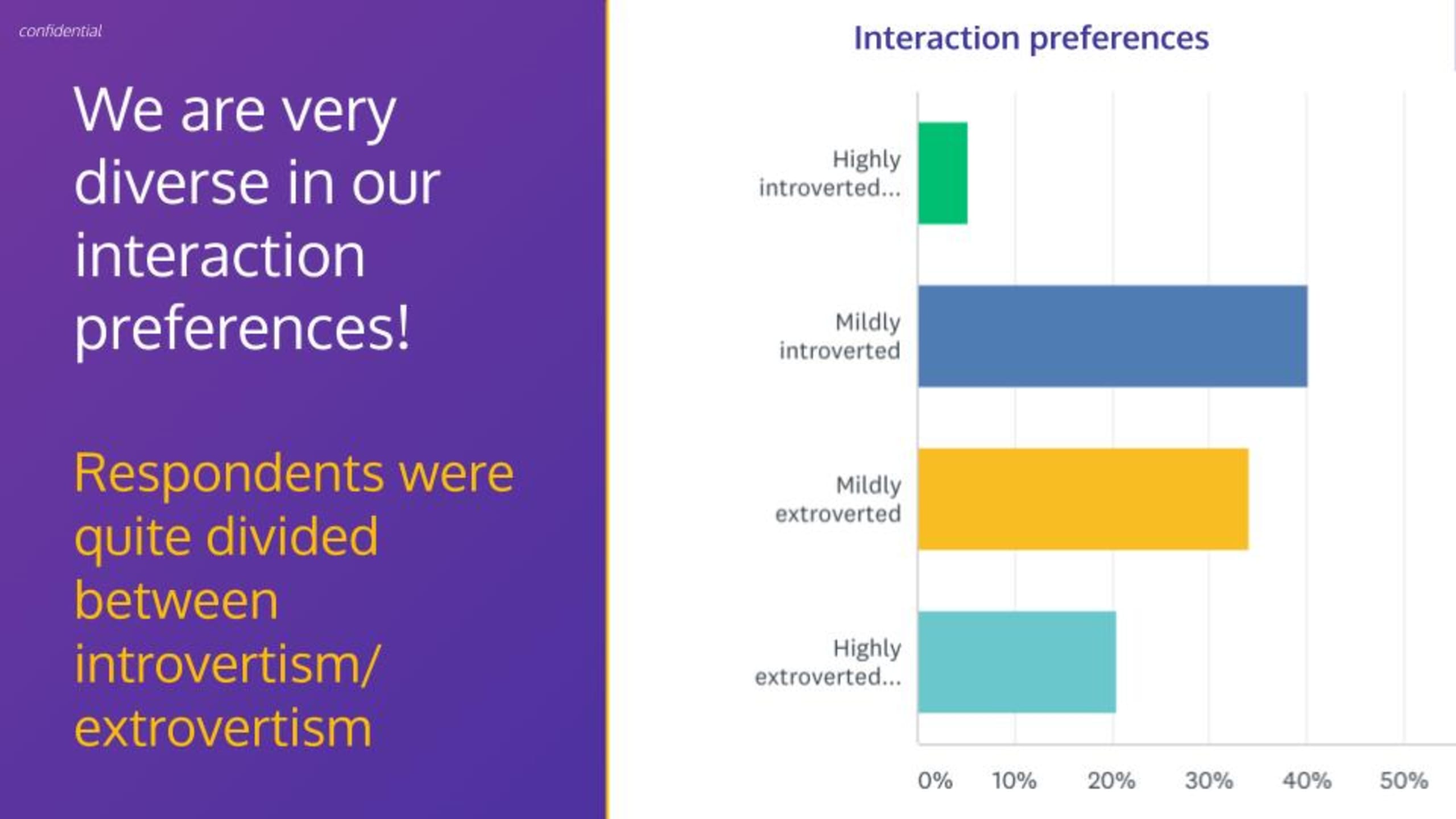
And finally—although we didn’t need to cover this in the survey—we track the more traditional metrics around gender and age. And here’s what we look like at Snyk. Our distribution across age groups reflects some of the deliberate investments we have made in leadership, seniority, and expertise across our functions. This is particularly rare in startups, where we are proud of our thoughtful and planful approach towards growth. With gender, as with most in the tech industry, we have some work cut out for us. Our demographic doesn’t meet the high bar we set ourselves. But we have our passion, our determination, our action plan, and are already seeing traction with our goals!

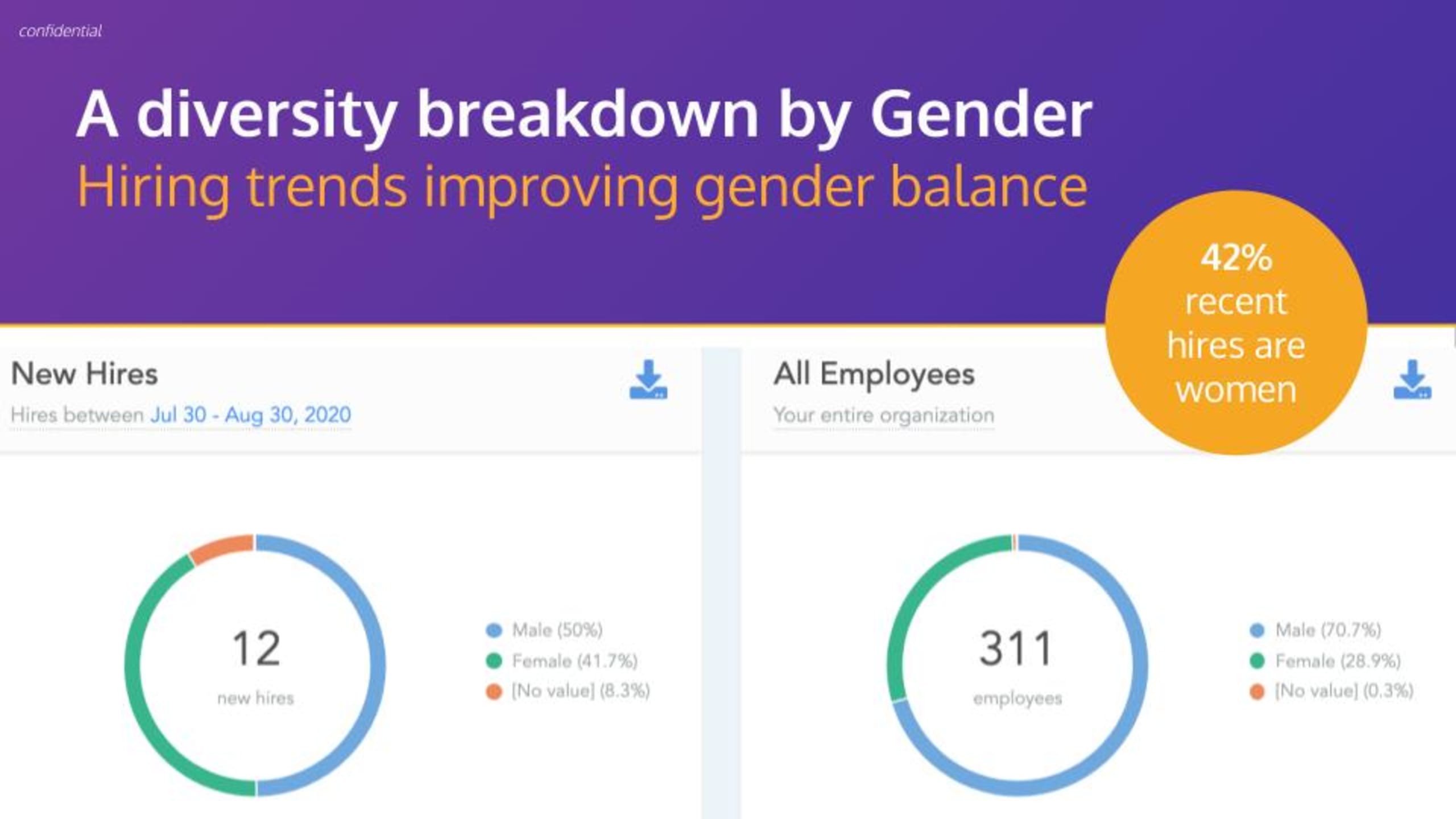
This is hardly the end of the story; it’s just the beginning. Having this visibility allows us now to plan for the future, but also, as importantly, to take a step back and appreciate for a moment the sheer richness of the layers that comprise our Snyk family today.
